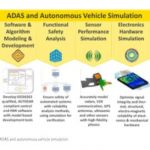A couple of recent semiwiki articles reviewed highlights of the annual TSMC Technical Symposium recently held in Santa Clara (links here, here, and here). One of the captivating sessions at every symposium is the status of the Design Enablement for emerging technologies, presented at this year’s event by Suk Lee, Senior Director at TSMC. In the broadest sense, design enablement refers to both EDA tools and design IP, developed specifically for the new process node.
TSMC focuses on early engagement with EDA vendors, to ensure the requisite tool features for a new process node are available and qualified, on a schedule that supports “early adopter” customers. As the prior semiwiki articles have mentioned, N10 tapeouts will be ramping quickly in 2017, with N12FFC and N7 soon to follow. So, it was no surprise that the EDA tool status that Suk presented for these nodes was green, usually for multiple EDA vendors (e.g., 3 or 4).
The unique part of Suk’s presentation is the description of key EDA tool requirements presented by the new process node. These offer insights into the additional complexities and design characteristics introduced. Here are some of the new features that struck me as particularly interesting.
stacked vias and via pillars
There are two characteristics of each new process node that are always troublesome for designers, and for the optimization algorithms applied during physical implementation. The scaling of metal and via pitches (for the lowest metal layers) results in increased sheet and via resistance. Correspondingly, this scaling also exacerbates reliability concerns due to electromigration — this issue is magnified due to the increased local current density associated with FinFET logic circuits.
SoC designs at these new nodes need an efficient method to utilize the upper level layers in the overall metallization stack, for reduced RC delay and/or improved electromigration robustness. Suk presented two options that are being recommended for N7 — stacked vias and via pillars. Design rules enabling stacked vias are leveraged by the TSMC Mobile platform, while the expectation is that the High-Performance Computing (HPC) platform designs will need to regularly use via pillars. A via pillar is depicted in the figure below.
Suk highlighted some of the unique EDA tool algorithms needed, to support the prevalent use of via pillars:
- physical synthesis, clocktree synthesis, APR
Physical implementation algorithms need to assess where via pillars are needed — there is a significant interconnect timing improvement versus route track blockage tradeoff assessment required.
- parasitic extraction, static timing analysis, EM, and I*R
The via pillar is a unique geometry. RC extraction tools need to translate this topology into a suitable model for subsequent electrical analysis (EM, I*R), specifically how the current will spread throughout the pillar. EDA vendors have addressed this via design insertion and analysis requirement for N7 — this is fully green.
One area that has me curious that Suk didn’t mention is the yield impact of using via pillars. Commonly, yield enhancement algorithms are exercised near the end of physical implementation, often by attempting to add redundant vias where feasible — perhaps, a via pillar insertion strategy will evolve as a new DFM/DFY option.
“cut metal” masks and coloring
Advanced process nodes have replaced traditional metal interconnect lithographic patterning with spacer-based mandrels and cuts, to realize more aggressive pitch dimensions. The drawn metal layout shapes are translated into drastically different mask implementations, involving the addition of: mandrel shapes (for spacer-based damascene metal etching); “cut masks”; and, metal/cut decomposition color assignment (associated with multi-patterning and successive litho-etch steps). There are optimizations available to reduce the need for multi-patterning of cuts, by adjusting the cut spacing through the addition of metal extensions — the figure below illustrates a simple example.
(From: “ILP-based co-optimization of cut mask layout, dummy fill, and timing for sub-14nm BEOL technology”, Han, et al., Proc. SPIE, October, 2015. Note the metal extensions added to align cuts.)
TSMC has worked with EDA vendors to optimize metal and cut mask generation, and multi-patterning decomposition. Flows impacted include physical implementation, LVS, and extraction. Suk’s presentation also briefly mentions that ECO flows with cut metal and metal extensions needed to be updated, as well.
dual pitch BEOL
At the symposium, TSMC introduced an aggressive technology roadmap, including the new N12FFC offering. This technology is intended to offer a migration path for existing 16FF+/16FFC designs.
N12FFC includes an improved metal pitch on lower levels, as compared to N16. Logic blocks would be re-implemented with a 6T cell library, from TSMC’s Foundation IP for N12FFC. Other hard IP would be re-characterized, without new layout. As a result, EDA vendors need to support dual-pitch back-end-of-line (BEOL) IP pin and routing implementations, integrating both new 12FFC and existing 16FFC blocks.
Suk highlighted that the Design Enablement team at TSMC is also introducing technology model support (and qualified EDA tools) to address the reliability challenges of new process nodes, especially the more stringent targets of automotive applications — e.g., advanced electromigration analysis rules, advanced (self-heat) thermal models for local die temperature calculations, device parameter end-of-life drift due to BTI and HCI mechanisms.
The close collaboration between TSMC and the EDA tool developers is fundamental to early customer adoption for emerging technologies. Each new node introduces physical implementation and electrical analysis challenges to conquer. It will be interesting to see what new EDA tool and flow capabilities the N5 process node will require.
-chipguy





